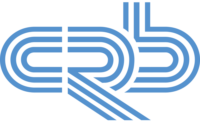According to the CDC, around 48 million people in the United States get ill from foodborne illnesses each year. So, food safety must remain a top priority for food facilities.
Food safety requires a multi-faceted approach, and there’s no shortage of measures to take. The key lies in reducing the growth of disease-causing microorganisms and finding the easiest and most cost-effective solution for the job.
The most straightforward way to combat microorganism build-up is by reducing their ability to thrive, and the best approach to do that is via a thoughtful drainage system.
It is for this reason that Global Drain Technologies, the parent company of Slot Drain Systems, has made an announcement this month that they will be starting a new division focused on Food Safe Drains. This new, specialized focus is a part of the company’s ongoing commitment to developing innovative and specialized drainage solutions. Food Safe Drain products will be a small percentage of drainage solutions that specialize in the food and beverage industry.
The Importance of Food Safe Drains
There’s no arguing the benefit of Global Drain Technology’s new line of products. At face value, Food Safe Drains will serve a simple purpose. They allow for easy clean-up and eliminate pooling liquids. However, there’s much more to the picture than merely washing things down the drain and forgetting about them.
All of the food residues, microorganisms, and other waste end up in those drains. If the drainage system is difficult to clean, they can become an ideal place for microorganisms and bacteria to thrive, because the wrong drains have optimal conditions for the growth of bacteria.
A lot of thought must go into setting up a drainage system. For one, you want a system that is built tough for heavy equipment, functions well and does not clog easily. Different drains have different capacities and functions. Secondly, you want a drainage system that makes cleaning easy and manageable.
So, what sort of drainage systems are the best fit for food plants?
The Right Drains for the Right Areas
The drainage system you need will vary greatly depending on the focus of your food facility. If you have a meat packaging plant, your needs will be much different than those of a bakery. The general concept is the same, though. 
Every facility has different areas with different risk levels. The risk level relates to how dangerous bacteria growth is, how heavy the traffic is, and how high the food security threat is.
There are three basic risk levels to consider:
- Low-Risk: Examples of low-risk areas would be your shipping area, storage area, or utility and maintenance areas. Essentially, these are your areas that don’t have a lot of traffic. They usually don’t require frequent wash-ups, and the threat of bacteria is low.
- Medium-Risk: Examples of medium-risk areas would be your laboratory, warehouse, or waste areas. Medium-risk areas will have more traffic than low-risk areas, but the threat of bacteria reaching the food is relatively low here.
- High-Risk: Your high-risk areas are the actual food processing and packaging areas. These are the areas where there’s high-traffic and where direct contact with food happens.
When it comes to designing your drainage system, it’s important to assess these risks. Food Safe area and hub drains are great solutions to low-risk, low volume areas, whereas trench and slot drains developed by Food Safe Drains are best suited for higher volume, high traffic areas.
However, there’s still more to consider before committing to a drainage system design.
Important Drain Considerations
Regardless of what type of food facility you have or what type of drains you need, there are some hard and fast rules when it comes to drains.
You want to ensure that your drains have high flow performance. This often requires a slope in the design. You also want to ensure that the drains have been manufactured hygienically. You’ll likely want drains with rounded corners, because they’re easier to clean and contain no harbor points for bacteria. And you’ll want to go with stainless steel thanks to its antimicrobial properties. Luckily, these are all factors that Global Drain Technologies have implemented into their line of Food Safe Drains.
The goal with drain system selection is to choose a drainage system that is effective and is easy to clean. Again, you want the drain to function, but if it’s not cleaned and well maintained, drains can become a breeding ground for bacteria. That’s why a Food Safe Drain specialized with easy clean-up features is critical for facility efficiency.
It’s crucial to select a drainage system that’s right for the area. It’s also critical to know that not all drains are created equally. The new lineup of Food Safe Drains is built to ensure you end up with a drainage system that works and is easy to maintain for years to come.
Drainage Systems: Getting Started
The best time to think about your drainage system is during the design of your facility, or when you’re already redoing the floor design. However, sometimes that’s not possible. If your facility is already operational, redesigning the drainage system is no easy feat. However, it might be a necessary one. Functional and high-quality slot drains are a terrific line of defense against foodborne illnesses.
Ultimately, whether you’re just designing your food production plant, redoing your bakery flooring, or just reassessing your food safety protocols, there’s no time like the present to keep Global Drain Technologies and their Food Safe Drains product line on your radar.
For more information visit http://foodsafedrains.com.






